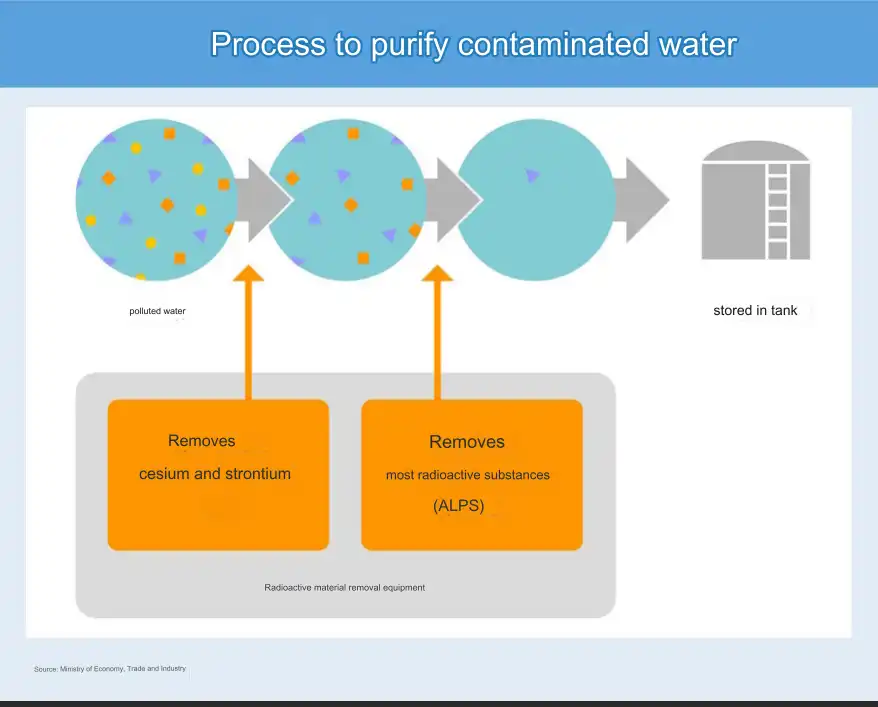Fukishima: Two Workers Hospitalized after Exposure to Contaminated Wastewater
- EB Virus Could Be Infected by Kiss: A Hidden Threat Linked to Cancer
- The Silent Threat: How Gas Stoves Pollute Our Homes and Impact Health
- Paternal Microbiome Perturbations Impact Offspring Fitness
- New Report Casts Doubt on Maradona’s Cause of Death and Rocks Manslaughter Case
- Chinese academician unable to provide the exact source of liver transplants
- Early Biomarker for Multiple Sclerosis Development Identified Years in Advance
Fukishima: Two Workers Hospitalized after Exposure to Contaminated Wastewater
- AstraZeneca Admits for the First Time that its COVID Vaccine Has Blood Clot Side Effects
- Was COVID virus leaked from the Chinese WIV lab?
- HIV Cure Research: New Study Links Viral DNA Levels to Spontaneous Control
- FDA has mandated a top-level black box warning for all marketed CAR-T therapies
- Can people with high blood pressure eat peanuts?
- What is the difference between dopamine and dobutamine?
- How long can the patient live after heart stent surgery?
Fukishima: Two Workers Hospitalized after Exposure to Contaminated Wastewater
Two Workers Hospitalized at Fukushima Daiichi Nuclear Plant after Exposure to Contaminated Wastewater for Decontamination and Observation.
At the Tokyo Electric Power Company’s Fukushima Daiichi Nuclear Power Plant, two male workers in their 20s and 40s have been hospitalized on the 26th due to an incident involving contaminated wastewater they were exposed to while cleaning pipes in the “Advanced Liquid Processing System (ALPS),” which removes most radioactive substances from contaminated water.
According to Tokyo Electric Power (TEPCO), medical examinations have determined that both individuals have a low likelihood of suffering from radiation burns, and there are no observed injuries to the skin at the contaminated area. Their overall health condition remains stable.
These two workers were part of a team of five male workers, who were cleaning pipes by flushing nitric acid solution through them to remove contaminants from the wastewater on the morning of the 25th. During the operation, a hose used to transfer the wastewater to a tank became detached, causing approximately 100 milliliters of contaminated wastewater to splash.
Out of the five workers, four of them had signs of contamination on their bodies. The worker in his 20s, who had full-body contamination, and the worker in his 40s, who had contamination on his lower body and both arms, were transferred to a hospital in Fukushima City on the evening of the 25th.
Despite decontamination efforts at the nuclear plant, their body surface contamination levels did not fall below the standard value of 4 becquerels per square centimeter.
What is ALPS at Fukushima Daiichi Nuclear Plant?
There are some important details about ALPS and its role at the Fukushima Daiichi Nuclear Power Plant:
-
Purpose: ALPS was specifically developed to remove radioactive substances, such as cesium, strontium, and other isotopes from the contaminated water. The treated water can then be stored or released safely, reducing the risk of contamination.
-
Multi-Stage Process: ALPS employs a multi-stage treatment process, including coagulation-sedimentation, filtration, and adsorption. The system is designed to remove a wide range of radionuclides from the water, making it suitable for long-term storage or controlled release.
-
ALPS Facilities: The Fukushima Daiichi plant had multiple ALPS units to process the vast amount of contaminated water generated at the site. These facilities played a critical role in the plant’s decommissioning efforts and the management of radioactive water.
-
Progress and Challenges: ALPS has been an important component of the decommissioning process at Fukushima Daiichi, allowing the removal of a significant portion of radioactive materials from the contaminated water. However, challenges remain, as the treated water still contains tritium, a radioactive isotope that is more challenging to remove.
-
Tritiated Water Management: One of the main ongoing challenges is the presence of tritium in the treated water. Tritium is a radioactive isotope of hydrogen, and it is difficult to separate from water. As of my last knowledge update in September 2021, discussions were ongoing about how to manage and potentially release this tritiated water, which had accumulated in large storage tanks at the site.
-
International Assistance: Japan sought international expertise and cooperation to address the challenges related to the management of contaminated water at the Fukushima Daiichi plant. This included sharing information and experiences with other countries facing similar nuclear waste management issues.
The Process of Purifying Contaminated Water
In the wake of the 2011 Great East Japan Earthquake, the Fukushima Daiichi nuclear disaster occurred. One of the byproducts of the efforts to cool the nuclear fuel debris that had melted and solidified in the reactor core is known as “contaminated water.”
To purify this contaminated water, the first step is the selective removal of cesium and strontium. Subsequently, a majority of the radioactive substances are removed using the Multi-nuclide Removal System (ALPS) and stored in tanks. However, it is not possible to eliminate a radioactive substance called “tritium.”
Here is an infographic illustrating the process of purifying contaminated water.

Fukishima: Two Workers Hospitalized after Exposure to Contaminated Wastewater
(source:internet, reference only)
Disclaimer of medicaltrend.org
Important Note: The information provided is for informational purposes only and should not be considered as medical advice.



